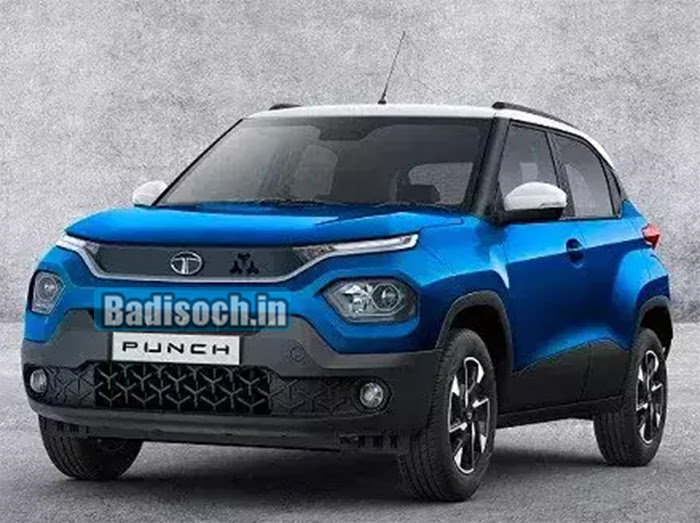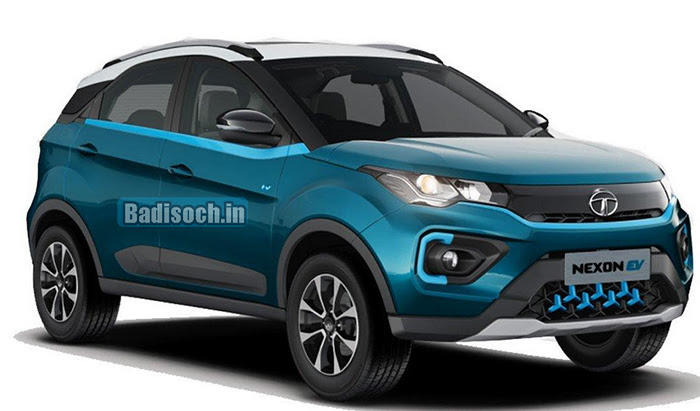Why EVs are not the best of alternative mobility fuel choices for now:- The investigation found that the assembly, use and disposal of battery electric vehicles generate 15% more ozone-depleting substances than crossovers or conventional motor vehicles. Furthermore, delivering an EV results in a larger number of outflows than manufacturing an ICE vehicle. A new report from IIT Kanpur has found EVs to be more harmful to the climate than half and half vehicles and conventional ICE vehicles. In any case, there is a need to examine and underline why EVs may not actually be entirely ideal from an ecological point of view, especially for the Indian environment.
Electric vehicles (EVs) are more harmful to the climate than hybrid vehicles and conventional gas-powered motor (ICE) vehicles, according to a study by IIT Kanpur. The test showed that the assembling, use and disposal of battery electric vehicles generate 15% and half as much ozone depleting substances compared to cross breed or conventional motor vehicles. Furthermore, delivering an EV results in a higher number of outflows than manufacturing an ICE vehicle.
Why EVs are not the best of alternative mobility fuel choices for now 2024
This is a strange finding in India and the jury is still out on the extent to which EVs are disastrous for the climate, prompting a re-examination of the purported utility and benefits of EVs – thereby promoting their use in the country. Growing in popularity. Adequate strategy by motivators – as well as their disadvantages. In any event, there is a need to examine and outline why EVs may not actually be entirely ideal from a naturalistic point of view, especially in the Indian environment.
A new report from IIT Kanpur finds EVs to be more harmful to the climate than hybrid vehicles and conventional ICE vehicles. Although this is a strange finding in India and the jury is still out on the extent to which EVs are harmful to the climate, it begs one to re-examine the purported utility and benefits of EVs – which in the country increasing his popularity. Their losses were helped by substantial strategy incentives as well.

Why EVs are not the best of alternative mobility fuel choices for now Details 2024
| Article about | Why EVs are not the best of alternative mobility fuel choices for now |
| Category | Automobile News |
 |
|
| Telegram | |
| Official Website | Check Here |
Why EVs are not the best of alternative mobility fuel choices for now:-
What the IIT study says?
The production, use and disposal of battery electric vehicles or BEVs emit 15-50 per cent more ozone-depleting substances than mixed and conventional motor vehicles, according to an IIT study taking into account the life cycle and total cost of ownership test. Thus, taking into account the assembling processes involved, the use of batteries during their lifetime and their degradation stages, EVs are responsible for additional discharge compared to normal and cross breed vehicles. In a whole-life fossil fuel byproduct investigation of EVs and Frost, it was found that 46% of BEV fossil fuel byproduct comes from the manufacturing cycle, compared to 26% for an ICE vehicle. Thus, in the early plant period of their life cycle, producing EVs is more harmful to the Earth than assembling ICE vehicles.
Another review argued that NOx, SO2 and PM emissions from EV manufacturing are 1.5–2.5 times higher than those from ICE manufacturing. In addition, BEVs, both half-breed and conventional vehicles, mixed vehicles, most importantly including ICE motors, are green, similar to the EV network, which allows it to be used for charging and re-energizing. provide strength. At the end of the day, an EV can be valuable to the climate only to the extent that it uses electricity from clean and non-renewable assets. Furthermore, unlike other types of EVs such as half and half electric vehicles (HEVs) and modular cross breed electric vehicles (PHEVs), BEVs are controlled entirely by electricity.

Check Also- Aprilia SR 160 Price in India
Higher emissions from production of EVs than ICE vehicles
According to most records, the formation phase of EVs generates a higher number of outflows than the frost formation phase. In another whole-life fossil fuel byproduct examination of EVs and Frosts, it was found that 46% of BEV fossil fuel byproduct comes from the manufacturing cycle, compared to 26% for an ICE vehicle. Another review estimated that NOx, SO2 and PM emissions from EV manufacturing are 1.5–2.5 times higher than ICE manufacturing during the entire production process (excluding raw material supply).
In another whole-life fossil fuel byproduct examination of EVs and Frosts, it was found that 46% of BEV fossil fuel byproduct comes from the manufacturing cycle, compared to 26% for an ICE vehicle. Thus, in the underlying plant phase of their life cycle, assembling EVs causes more damage to the earth than manufacturing ICE vehicles. Another review argues that NOx, SO2 and PM emissions from EV manufacturing are 1.5–2.5 times more prominent than those from ICE manufacturing. Fourth, it is also increasingly being observed that the non-exhaust discharge of EVs, especially from wear and tear of tyres, brakes and road surfaces, is higher than that of conventional ICEs.

Check Here- Hero Xtreme 200S 4V
Higher non-exhaust emissions from EVs vis-a-vis ICEs
It is also increasingly being observed that non-exhaust emissions of EVs, especially from wear and tear of tyres, brakes and road surfaces, are significantly higher than regular exhaust. This is especially valid for EVs with heavy weights. Also, EVs are necessarily heavier than ICE reciprocators due to the battery structure. In fact, heavy-duty EVs generate 3-8 percent more PM2.5 than ICE vehicles. Furthermore, PM 2.5 has a serious impact on respiratory health, especially in urban areas. Despite the fact that India is in the early stages of EV reception, within a few years, India will be burdened with a large amount of discarded batteries made of ecologically sensitive minerals like lithium and others, which can be recycled if possible. May go. should go. Can be recycled. If it is not disposed of or reused in a proper manner, it can mean a waste to the neighborhood population and the environment.
Once again, due to the heavy load of an EV, a fraction of a metric ton of battery load can make tire outflow several times more prominent than actual tailpipe discharge, all else equal. Going above and beyond, another investigation shows that non-smoke molecule discharges from a single EV are likely to exceed all molecule outflows from ICE passenger vehicles, including exhaust gas emissions. Fifth, depending on the battery parts, breaking down, disassembling and reusing an EV is a more viable test than ICE vehicles. When the batteries of electric vehicles fall into the 70–80 percent range after about 10 years of use, their driving efficiency drops significantly.

Check Here- Porsche 911 GT3 Launch
Sourcing of material for battery systems harmful to ecosystem
There is no disagreement regarding the waste and biological difficulties that arise when obtaining natural substances and contributions for EV batteries. In particular, the mining of key natural materials such as cobalt, nickel and lithium is fraught with high environmental hazards. In China, the lithium capital of Asia, as well as in South America, there have been frequent reports of stream frameworks being contaminated with lithium-related synthetic holes. Also the extraction of Cobalt is playing havoc with the living souls and environment in Congo. Inevitably, the manufacture of lithium is also exceptionally water-based and approximately 2 million liters are required to manufacture one tonne of lithium, again an extremely significant expenditure.
Furthermore, if, instead of expanding local borders, we stick to imports, we need to remember that China, a major international provider, geopolitically, is not exactly a reliable import partner. Despite the fact that India has recently found lithium reserves in Jammu and Kashmir, mining of this rare mineral can have huge adverse socio-ecological impacts, especially in the Himalayan mountain range, which is unhealthy for lithium. The Pilbara and Yilgarn are the more geologically stable districts in Australia due to the location of the mines. It is estimated that 15 tons of carbon dioxide are released for each large amount of lithium separated.
Conclusion
According to the analysis, battery electric cars produce 15% more ozone-depleting pollutants during production, usage, and disposal than crossovers or traditional motor vehicles. Additionally, supplying an EV generates more outflows than producing an ICE car. According to a recent study from IIT Kanpur, EVs are worse for the environment than both hybrid and regular ICE automobiles. In any event, it is important to consider and emphasize the reasons why EVs might not be completely optimal from an ecological standpoint, particularly for the Indian environment.
Frequently Asked Questions
[sc_fs_multi_faq headline-0=”h3″ question-0=”What are the disadvantages of electric cars for the environment?” answer-0=”Electric vehicles don’t produce exhaust emissions, but they do require batteries, which can produce hazardous vapors. The majority of the electricity needed to power electric cars comes from non-renewable energy sources, which may be harmful to the environment and human health.” image-0=”” headline-1=”h3″ question-1=”Why electric cars are not the future?” answer-1=”Electric-powered cars are not on the road to a renewable and clean future. They are powered by lithium-ion batteries that will pose a real threat to the environment if continued to be manufactured at the rate of current gasoline-powered cars.” image-1=”” headline-2=”h3″ question-2=”Are electric vehicles more energy efficient?” answer-2=”Even the best diesel engine, fully warmed up, struggles to get to 40% efficiency. In other words, a conventional car wastes well over half the energy in its fuel.” image-2=”” headline-3=”h3″ question-3=”Why electric vehicles are not the future in India?” answer-3=”Because of their high initial prices, lack of established resale value, and lack of confidence in the new technology, electric vehicles are still not popular in India. The government is offering tax incentives to lower up-front costs in order to allay these worries.” image-3=”” count=”5″ html=”true” css_class=””]
Related Post:-